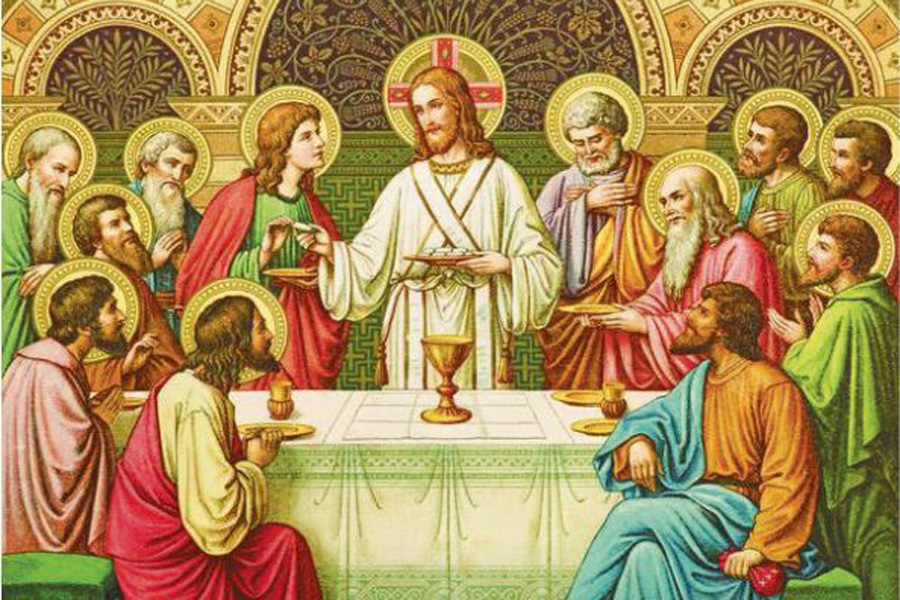
The Most Holy Body and Blood of Christ
06-02-2024Gospel ReflectionRichard PeckIn the Chapel of the Most Holy Trinity at West Point, New York, the stained-glass windows along the side walls depict various patron saints of soldiers, among them Michael the Archangel . . . and very prominently next to the archangel, Joan of Arc, the Maid of Lorraine (France) and soldier-martyr for God and country.
— From God & Country, by Fr. Michael Cerrone
Joan of Arc’s life is a living picture of the U.S. Military Academy’s motto, “Duty, Honor, Country,” to which St. Joan added the virtues of faith, hope, and love—love of God most of all. These things were true of Joan’s life from childhood throughout her teens, even at her wrongful execution in the year 1431 at age 19, where she forgave her persecutors.
Who was this young saint? One way to answer that question is by considering the two statues of St. Joan on our campus. The first is located outdoors in front of the St. Katharine Drexel chapel. The second is inside the narthex of the church.
In both statues, St. Joan appears in military garb. The borders of France in the 1400s were not then as they are now. France was divided within and threatened from without. English invaders controlled parts of France and claimed rights to the country’s crown.
Into this conflict, stepped young Joan. At age 13, she began to hear heavenly voices whom she later identified as St. Michael the Archangel, St. Catherine of Alexandria, and St. Margaret of Antioch. They directed her to rid France of the invaders, to bring peace within France, and to conduct Charles VII to the city of Reims to be crowned king at Reims Cathedral.
The statue outside the St. Katharine Drexel Chapel shows St. Joan’s boldness and leadership in doing her duty, standing confidently in her armor and holding the standard (flag) she carried into combat. A shield rests at her side, a helmet at her feet. The statue in the narthex shows a more contemplative Joan, with the Cross prominently resting on her shoulder and sword at her side.
These elements—symbols, we might call them—can be “read” as a visual Gospel that describes the saint’s life and faith. Joan’s standard, a prominent part of the outdoor statue, is important. It bears the names Jesus and Mary on the side nearest Joan. On the back it features lily-like flowers (fleur-di-lys). The fleur-di-lys are part of France’s coat of arms, but also the three points of the flower represent the Holy Trinity, Joan’s source of divine direction through the saints’ voices she heard.
Her armor, helmet, and shield point to the armor of God described in Ephesians 6:10-17. Her faith equipped her with the truth, her armor was her breastplate of righteousness, and she wore the helmet of salvation and carried the sword of the Spirit, all spoken of in that passage.
What about the cross on the shoulder of her statue in the narthex? It represents not just her deep devotion to Jesus Christ, but her own self-sacrifice for others. Sadly, it also foretells of her death following an unjust trial. Joan asked to hold a cross as the executioner’s fire was lit. A soldier gave her one made of two pieces of wood. Then, as the flames rose higher, a Dominican friar held a crucifix within her sight and Joan breathed out the holy name of Jesus.
These symbols of St. Joan’s visual Gospel are important, so that we don’t spiritualize Joan’s story, turning her into a “long ago in a land far away” myth, forgetting she was a real flesh-and-blood teenager who became a saint. As a result of detailed records of her trial, and later, of her rehabilitation (when she was cleared of all charges), she is one of the best documented saints of the past 600 years. Her life was as real as yours or mine, an example and role model for us today.
St. Joan of Arc, pray for us!
Quotation used by permission Sophia Institute Press
BACK TO LIST